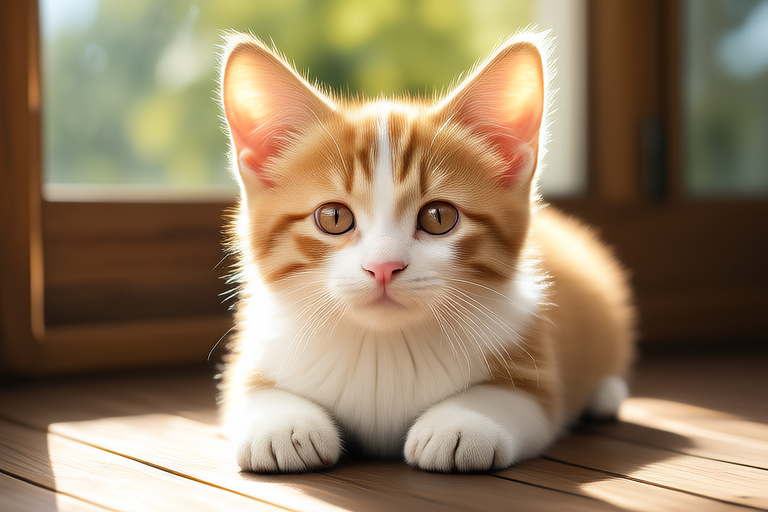Munchkin Cats: The Unique Short-Legged Feline Companions
The Munchkin cat is a breed known for its distinctively short legs, which give it a unique appearance that has captured the hearts of many cat lovers. This breed, with its charming looks and engaging personality, offers a delightful addition to any household. Let’s delve into the various aspects of this fascinating feline.
Appearance: A Blend of Grace and Uniqueness
The Munchkin cat’s most striking feature is undoubtedly its short legs. These legs are proportionate to the rest of the body, and the cats are typically of medium size, weighing between 4 to 9 pounds. Their short legs do not hinder their agility; instead, they add to their playful and energetic nature. The Munchkin’s body is well-proportioned, with a rounded head and large, expressive eyes that often appear curious and alert.
In terms of coat patterns and colors, Munchkins come in a wide variety. They can have long or short hair, with the short-haired version being more common. Their coats can be solid-colored, tabby-patterned, bicolor, or even tri-color. The variety in coat patterns and colors ensures that there is a Munchkin cat to suit every taste.
Temperament and Personality: Playful and Affectionate
Munchkin cats are known for their friendly and outgoing personalities. They are highly social and enjoy the company of humans and other pets. Their playful nature makes them excellent companions for families with children, as they are patient and gentle. Munchkins are also known for their curiosity and intelligence, often exploring their environment with enthusiasm.
These cats are affectionate and love to interact with their owners. They are not overly demanding but appreciate attention and playtime. Their adaptable nature means they can thrive in various living conditions, from small apartments to spacious homes. Their playful and affectionate demeanor makes them ideal companions for those looking for a loving and interactive pet.
Health Concerns: Managing the Challenges
While Munchkin cats are generally healthy, there are some health concerns specific to the breed due to their genetic makeup. One of the most significant issues is spinal problems, which can arise from the breeding of cats with short legs. It’s crucial for potential owners to research reputable breeders who prioritize the health of their cats.
To manage these health concerns, regular veterinary check-ups are essential. Early detection and treatment of any issues can prevent complications. Maintaining a healthy weight and providing a balanced diet can also help in reducing the risk of spinal problems. Regular exercise is another key factor in ensuring the overall health and well-being of Munchkin cats.
Origin and History: The Birth of a Unique Breed
The Munchkin cat breed originated in the United States in the late 20th century. The breed was first recognized by The International Cat Association (TICA) in 1994. The story of the Munchkin begins with a black female cat named Blackberry, who was found in Louisiana in 1983. She had unusually short legs, and her offspring inherited this trait. Over time, selective breeding led to the development of the Munchkin breed.
Despite initial controversy over the ethics of breeding cats with shortened limbs, the Munchkin has gained acceptance within the cat fancy community. Today, the breed is recognized by several major cat registries, including TICA and the American Cat Fanciers Association (ACFA).
Anecdotes and Notable Munchkins
One notable Munchkin cat is named Pudding. Pudding gained fame through his participation in a viral video where he demonstrated his exceptional jumping ability. Despite his short legs, Pudding could leap onto high surfaces, showcasing the breed’s surprising agility. His video garnered millions of views and helped to highlight the unique abilities of Munchkin cats.
Another famous Munchkin is named Socks. Socks was adopted by a family in New York City and quickly became an internet sensation. Her playful antics and charming personality endeared her to countless viewers. Socks’ story emphasizes the adaptability and social nature of Munchkin cats, making them suitable for urban environments.
Tips for Potential Owners
If you’re considering adopting a Munchkin cat, here are some tips to ensure a smooth transition:
- Choose a Reputable Breeder: Select a breeder who prioritizes the health and well-being of their cats. Ask about the health history of the parents and the breeding practices used.
- Provide Adequate Space: While Munchkins can adapt to various living conditions, providing enough space for them to move around freely is important. Ensure that your home is safe and free from hazards that could injure their legs.
- Regular Veterinary Care: Schedule routine check-ups with your veterinarian to monitor the health of your Munchkin. Early detection of any potential health issues can significantly improve outcomes.
- Engage in Play: Spend quality time playing with your Munchkin. Interactive toys and games can help keep them mentally and physically stimulated, enhancing their overall well-being.
- Be Prepared for Grooming: Whether your Munchkin has long or short hair, regular grooming is necessary to maintain their coat’s health and appearance. Brushing helps remove loose fur and prevents matting.
Munchkin cats offer a unique blend of charm, playfulness, and affection that makes them beloved companions. By understanding their specific needs and providing proper care, you can ensure a happy and healthy life for your Munchkin cat.
